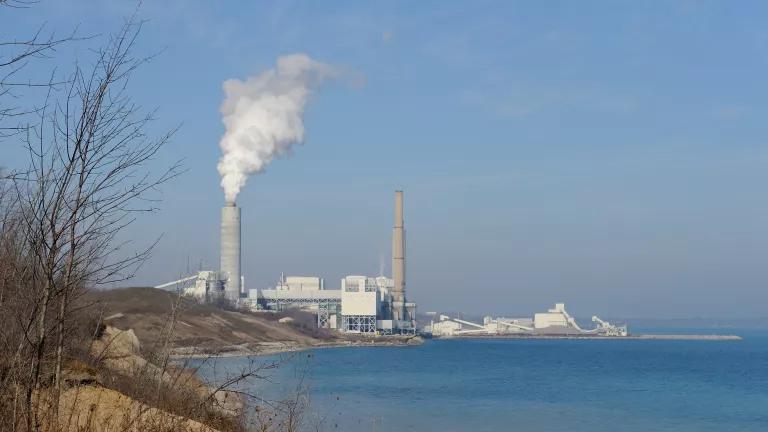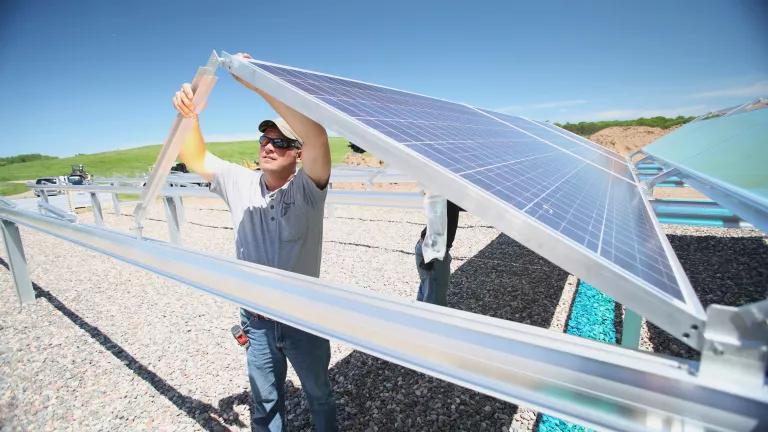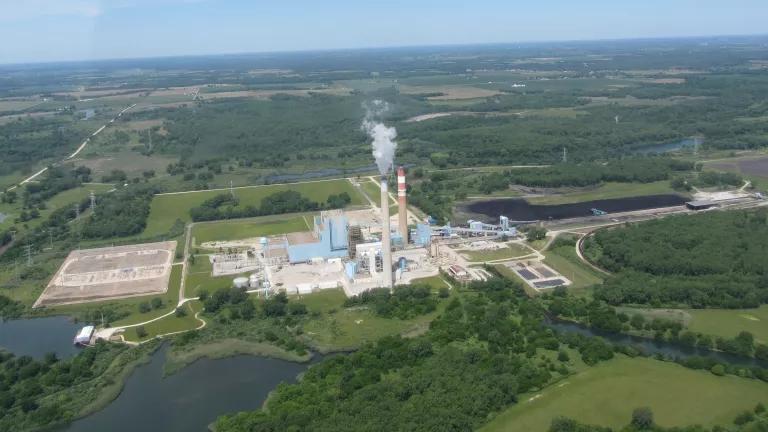Why Illinois Has a Power Supply Crunch, and How to Fix It
Market forces have driven a lot of coal power offline in the past decade—but regulatory barriers and outdated thinking by some utilities has led to missed opportunities to expand affordable clean energy resources.
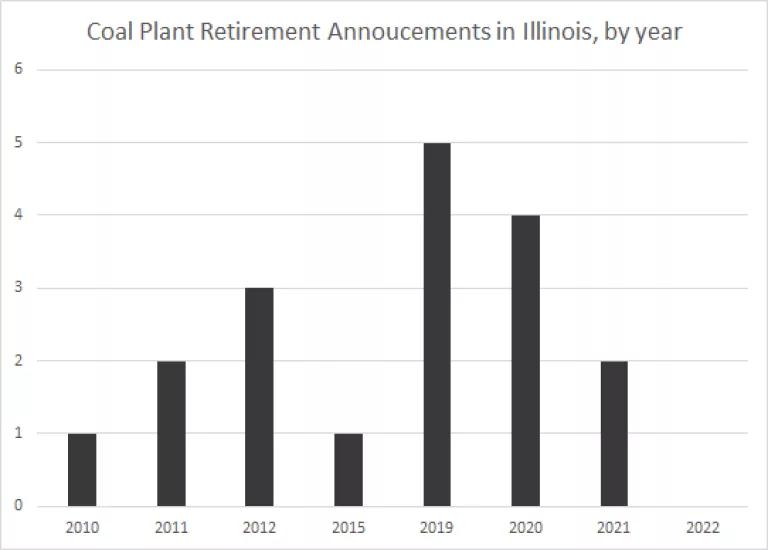
Prices for capacity (an energy product that is essentially a promise by the owner of an energy resource to be available when needed, like on a hot summer day) increased exponentially this year across the northern and central regions of the Midcontinent Independent System Operator (“MISO”), an electric grid operator whose territory spans much of the Midwest, including southern Illinois. This will increase electricity prices for customers in southern Illinois.
How did this happen?
In short, market forces drove a lot of coal power offline in the past decade, while regulatory barriers and outdated thinking by some utilities has led to missed opportunities to expand affordable clean energy resources.
High capacity prices in MISO were a decade in the making
The high capacity prices we see today have been many years in the making. MISO’s independent market monitor called the recent price increases “the outcome we’ve been worried about for a decade.”
The good news is we have the tools for Illinois and other states to achieve a reliable, affordable, clean grid: low-cost wind and solar energy, energy efficiency, demand response, transmission, and energy storage.
To solve this problem, we have to understand how we got here. As we’ll see, that means rejecting the false, self-serving myths the fossil fuel industry has been peddling.
In Illinois between 2010 and the summer of 2021, power plant operators announced their intent to retire 18 coal plants. These retirements were largely driven by market pressure and the weakening economics of coal-fired power. Every single one of these retirements was announced before Illinois passed the Climate and Equitable Jobs Act in September 2021.
The era of expensive fossil fuels: Uneconomic Illinois coal plants retire and gas prices near record highs
Coal plants are “closing naturally because natural gas prices are low, which then turns power prices low,” according to a 2020 interview with Curt Morgan, President and CEO of Texas-based Vistra Energy, one of Illinois’ largest coal plant owners. Morgan went on to say that while many states were enacting policies to move away from coal, that “what is interesting is that’s not why coal plants are shutting down.” Vistra Energy also said that, despite the company’s best efforts, its “[coal] plants remain uneconomic.”
The “low” gas prices that Curt Morgan referred to in 2020 are long gone, though.
In large part because of Vladimir Putin’s invasion of Ukraine, the price of fossil gas (also called “natural gas” or just “gas”) have surged to their highest levels since 2008. The US has also quadrupled its exports of fossil gas since 2016, which drives up prices in America.
In this new era of price volatility for gas, gas power plants can no longer credibly claim to provide energy at stable and low cost.
Clean energy resources can cost-effectively meet Illinois’s capacity needs
Clean energy resources can provide power at a low, stable cost. For example:
- Wind power, solar power and energy efficiency are the lowest-cost energy resources in the United States, in addition to being the cleanest. Wind and solar also compliment each other, and provide more consistent power when they are combined (Illinois’ clean energy standard leverages this advantage by calling for a mix of 45% wind and 55% solar). And unlike fossil fuels, the price of homegrown clean energy isn’t subject to the whims of a dictator half a world away.
- Demand response, where customers are paid to temporarily reduce their electricity use, is also extremely cost-effective: one study found demand response saved Illinois customers $2.62 for every dollar spent.
- Energy storage - essentially much bigger versions of the battery in your phone - is another solution. The cost of energy storage fell more than 70% in just four years, and the amount of energy storage in the US has increased more than 1000% in the last decade. Energy storage combined with renewable energy has become “cost-competitive” and is now “replacing gas peakers,” according to Bloomberg. Energy storage has an important and growing role in keeping our grid reliable and can help free us from dirty, increasingly expensive fossil fuels.
- Transmission – high-capacity power lines that can move electricity long distances – is also critical to lowering prices, protecting reliability, and enabling more clean energy. There is “ample capacity across MISO to meet demand” but MISO is “limited in how much power it can reliably move between its South and Midwest regions.” Lack of transmission was a major contributing factor to the tragic 2021 blackouts in Texas – we must learn from those mistakes if we want to avoid repeating them.
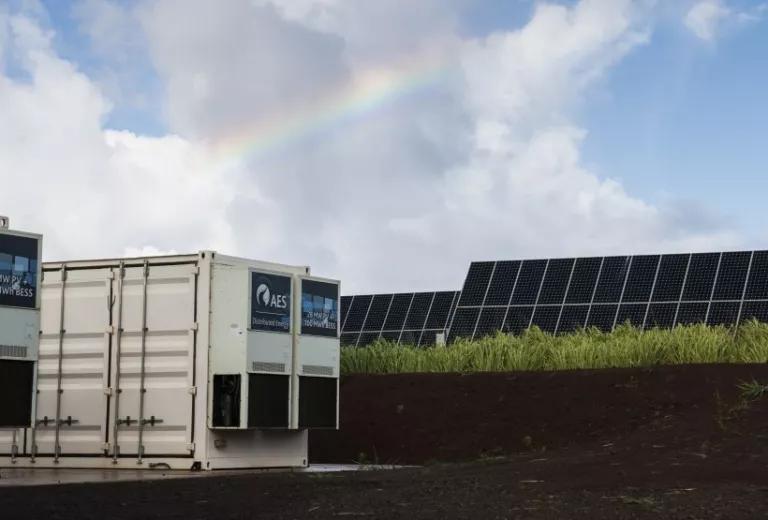
AES Solar and Storage Project in Kauai, Hawaii
But we are not yet taking full advantage of any of these cost-effective technologies in MISO, particularly in its Illinois region.
80 wind and solar projects totaling more than 14 gigawatts (GW) are waiting to come online in the Illinois zone of MISO alone, many of them paired with energy storage. That is enough to power about 5 million homes, and more than three times what is needed to make up the capacity shortfall across the Midwest that’s driving high prices.
In other words, there’s plenty of power capacity just waiting to get on the grid, but our transmission infrastructure needs upgrades to handle it all.
Fortunately, MISO has proposed a transmission build-out which would provide $37 billion in benefits to the northern MISO region that includes Illinois. Those benefits include customer savings, improved reliability, and cleaner air. Building this transmission infrastructure would also put union women and men to work by creating nearly 32,000 jobs in Illinois.
Energy efficiency and demand response are also cost-effective but tragically under-used in Illinois’ MISO zone. Energy efficiency is not providing any capacity in MISO, including in Illinois, despite providing significant capacity just two years ago (it may be considered in other ways). Ameren, which provides electricity service in the part of Illinois served by MISO, offers almost no demand response or energy efficiency beyond a small amount required by law.
In fact, Ameren fought to lower its energy efficiency targets, failed to meet the targets set in law in the past, and argued that energy efficiency and demand response are not cost-effective and that it should not deploy them.
The lack of energy efficiency and demand response resources to meet capacity needs in southern Illinois is contributing to the capacity shortfall and to higher bills for its customers. To address the shortfall, Ameren should move as quickly as possible to expand these resources, which at today’s capacity prices are likely very cost-effective, and can generally be brought online faster than power generation.
The state of Illinois has a role to play too. Beyond the large renewable energy build already set to happen in the coming years, the state can incentivize - or require - Ameren to ramp up demand response and energy storage. Illinois may also be able to find creative ways to hedge against rising energy prices. One example of this is the Carbon Mitigation Credit, which was passed as part of the Climate and Equitable Jobs Act (CEJA) last year. It provided certainty for nuclear plant operators, giving them a subsidy if energy prices were low, but requiring the plant operators to pay customers if prices were high. The result: amid rising energy prices, nuclear plant operators will pay to provide customers in northern Illinois about $20 a month on their electric bills this year.
There’s a clear way forward to keep our electricity reliable and affordable – IF we’re honest about the cause of this problem and the solutions that can help.
The fossil fuel industry story about capacity shortfalls is inaccurate and self-serving
Unfortunately, some fossil fuel and corporate interests have tried to mislead the public about what caused the spike in capacity prices in the MISO, suggesting that Illinois’ climate and clean air protections, passed into law last year as part of CEJA, were to blame.
But the dates set in CEJA for emissions reductions are years in the future. Fossil fuel power plants are allowed to keep emitting at their current levels through 2030. Whatever disdain fossil fuel companies may have for the law, the fact is that it’s had little, if any, impact on power markets to date.
We know this because:
- MISO’s own market experts have been worried about a capacity shortfall “for a decade."
- Every coal plant in Illinois that’s scheduled to retire made that announcement before the passage of CEJA.
- Coal generators themselves conceded that their plants were simply “uneconomic.”
- No fossil fuel plant has been required to reduce its emissions yet because of CEJA. Fossil fuel plants may keep emitting at their current levels through 2030.
The fossil fuel industry’s response to every clean air protection is the same: it’s too expensive, it’s unworkable, the sky will fall. They said this about the Clean Air Act, the landmark US clean air law from the 1970s. They were dead wrong – the benefits of the Clean Air Act have outweighed the costs 30 to one. It’s an old, self-serving story, and it’s no surprise they’re saying the same about CEJA.
Fossil fuel interests have also suggested that building more fossil fuel power plants offers a quick fix to our capacity shortfall – this is also wrong.
First, it’s wrong because we must address the climate crisis, and avoiding catastrophic climate change will require that we not build any more new fossil fuel infrastructure. Climate change is already hurting us right now in Illinois, and it will get worse and worse unless we stop burning fossil fuels as quickly as possible.
Second, it’s wrong because fossil fuel plants take years and years to come online. Taking one recent Illinois gas plant as an example, its owner began the development process in 2016, and it is set to come online in 2022, six years later. Plants that burn increasingly expensive and volatile fossil gas, and wouldn’t come online until 2028, won’t make our energy more affordable today.
Illinois should deploy clean energy resources to lower prices, maintain reliable electricity, and create good union jobs
The way to a reliable, affordable electric grid in Illinois is building cost-effective infrastructure and clean energy resources that will allow us to meet our needs at the lowest cost.
Here’s how we can do that:
- Support and accelerate the build-out of transmission infrastructure, both in MISO and at the state level in Illinois, to allow power to get more efficiently to where it’s more needed, improve reliability, connect huge amounts of affordable clean energy to the grid, and provide opportunity for union workers by creating nearly 32,000 jobs.
- Continue the deployment of clean energy under CEJA. Existing clean energy projects in the queue in MISO could more than meet our capacity needs, and even more clean energy is on the way under CEJA. Deploying these resources will provide much-needed capacity and help lower costs for consumers.
- Quickly expand energy efficiency and demand response. Unlike fossil fuel power plants, these measures can be implemented quickly, they can provide the capacity resources we’re currently short on, they’re extremely cost-effective, and there is a huge untapped opportunity for demand response in Illinois’ MISO region. Also, there may be simple ways to squeeze more capacity out of energy efficiency measures that are already in place but not being recognized as capacity resources.
- Deploy storage to meet reliability and capacity needs in Illinois (and charge that storage with clean energy). The cost of energy storage is dropping rapidly in cost and is already meeting system capacity needs elsewhere in the US. Illinois is home to Argonne National Laboratory, an international leader on energy storage research. We have the opportunity to improve our electric grid, while also solidifying ourselves as a hub for this cutting-edge technology. And, because renewable energy and storage go together like peanut butter and jelly, we can make Illinois clean energy even more efficient and cost-effective. The Illinois Commerce Commission is set to issue a report in the next few weeks recommending energy storage policies and targets for our state. And just last week, the Illinois Power Agency announced a procurement for 228 MW of solar paired with energy storage, through the “Coal to Solar” program established in CEJA – a first step towards a clean energy solution to our state’s capacity shortfall.
The capacity shortfall in southern Illinois is a real and unfortunate hardship in the short term, driven by fluctuating markets and decisions by out-of-state fossil fuel companies. People with low incomes - who spend an average of 13% of their income on energy - will be most impacted. We should provide immediate assistance to the people who need it most, much of which can be accomplished by ramping up existing energy assistance programs.
Once we’ve done that, we should remember that one of Albert Einstein’s guiding principles was: “in the middle of difficulty lies opportunity.”
In our difficulties today in Illinois, there is opportunity. We can create good jobs, lower costs for consumers, and insulate ourselves from the cost shocks caused by Vladimir Putin and other petro-dictators, by being smart about growing our clean energy economy. We have all the tools we need. Let’s get to work.

